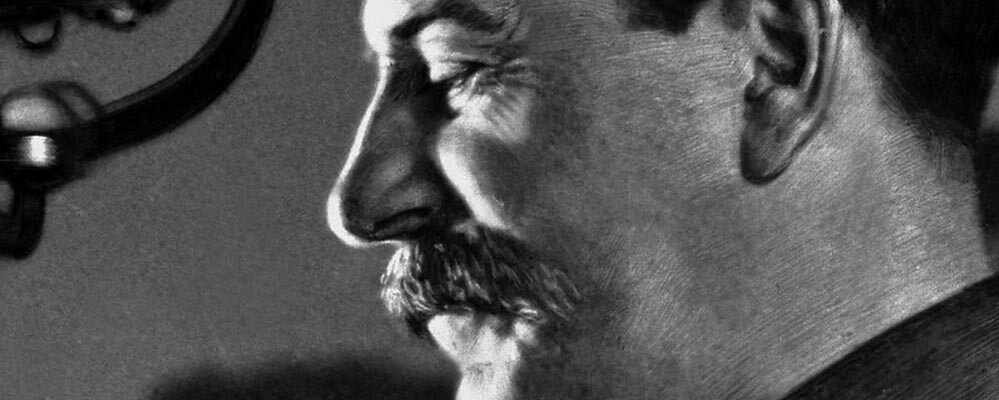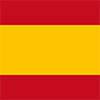The author of the designation of the dissident as 'fascist' and his contribution to the rise of nazism
Since the first half of the last century, the political situation and the majority ideologies in Europe have changed markedly, but a bad habit of the far left has not changed.
They describe as 'fascists' people who have nothing to do with fascism
Judging by the number of times some call their political rivals "fascists", sometimes it seems as if there are more fascists today than in 1930. But it is not so. Fascism and national-socialism have become purely marginal phenomena, fortunately. It is something worth celebrating that these two totalitarian ideologies have been extinguished. It must be said that what many politicians and media mistakenly call "far-right" has nothing to do with fascism and even less with nazism. In fact, most of that badly called "far-right" with merely conservative or conservative-liberal parties, which receive that unfair nickname because the center-right has been shifting to the left by assuming much of its thesis. But also, is it logical to call fascism and nazism "far-right"?
Fascism and nazism are two forms of nationalist socialism
Fascism and Nazism are totalitarianisms that do not fit well in the classic scheme of left and right emerged from the French Revolution. Their anti-communist character does not make them rightists, of course. Recall that both fascism and national-socialism were socialist movements that, unlike Marxist socialism (internationalist), had adopted a nationalist line. Benito Mussolini began his political career in the Italian Socialist Party. After his expulsion in 1914 he founded the newspaper Il Popolo d'Italia, which kept the definition of "socialist" at its masthead until 1918. The newspaper, which was a socialist media of nationalist line, became four years later in the official organ of the fascist regime. The ideological line of nazism is even clearer with its own denomination: what is commonly known as the "Nazi Party" was officially called "National Socialist German Workers' Party", a supporter of a nationalist socialism.
The corporate state that fascism and nazism defended was an anti-liberal and interventionist state, just like communism. It is true that a part of the right was fascinated by fascism for its anti-communism, and it is also true the stupor caused in that right by the pact signed between Germany and the USSR in 1939, with which Hitler and Stalin invaded and divided Poland, a deeply catholic and conservative country. In fact, among the American left there was also fascination with fascism. Roosevelt praised Mussolini in 1933. One of the leading economists of current socialism, John Maynard Keynes, acknowledged that his theory "can be applied much more easily to the conditions of a totalitarian state" than in a free market model, and He said it in the German edition of his "The General Theory of Employment, Interest and Money", published in 1936, already with the nazis in power.
It was Stalin's dictatorship who devised that way to criminalize dissent
What is often forgotten today, on the other hand, is the origin of that ugly custom of calling "fascist" everyone who disagrees with the left or even the far-left. The use of the term "fascist" to disqualify the dissident, and specifically the social-democrats, began in the USSR during the term of the dictator and genocidal Stalin. The fifth congress of the Communist International, held in Moscow between June and July 1924, issued a "Resolution on fascism" that stated the following: "As bourgeois society continues to decline, all bourgeois parties, particularly social democracy, they acquire a more or less fascist character ... Fascism and social democracy are the two sides of the same instrument of the capitalist dictatorship. In the fight against fascism, therefore, social democracy can never be a trusted ally of the proletariat in struggle." And all this, simply, because the Socialists had broken up with the Communists a year earlier, in 1923, with the founding of the Workers' and Socialist International.
They ended up calling 'fascists' even the communists who disagreed with Stalin
Developing these approaches of the Comintern, on September 20, 1924, an article by Stalin entitled "On the international situation" was published, in which the dictator stated: "it is not true that fascism is only the fighting organisation of the bourgeoisie. Fascism is not only a military-technical category. Fascism is the bourgeoisie’s fighting organisation that relies on the active support of Social-Democracy. Social-Democracy is objectively the moderate wing of fascism." The dissemination of this absurd thesis by all the communist parties, which were limited to repeating the slogans Stalin issued from Moscow, gave rise to a miserable way to criminalize the mere discrepancy of Stalin's dictates, whoever was the discrepant. In fact, that way of brutally stigmatizing all dissent ended up turning against not a few of its imitators: between 1937 and 1938, in the middle of the Spanish Civil War, a Trotskyist communist organization, the Workers' Party of Marxist Unification (POUM), was dissolved following orders of Moscow, being its leaders imprisoned and even killed under the false accusation of having "recognized character of fascist organization" and of being part of an "international fascist conspiracy".
This trivialization of fascism contributed to the rise of Nazism in Germany
Before that, by using the adjective "fascist" against everyone who was against them, the communists ended up helping to trivialize true fascism. And if everyone who disagreed with the communists was a "fascist", then fascism should not be so bad, some thought. In addition, as I explained here, that awkwardness of Stalin served to weaken the Weimar Republic, whose governments relied heavily on coalitions between social democrats, centrists and populars. With this, the communists contributed to the rise of Nazism, even reaching Nazi deputies on numerous occasions: of 241 issues voted in the Reichstag and in the state parliament of Prussia in 1929 and 1930, nazis and communists voted together in 70% of the time. The political violence of the militias of both parties (the Rot Front of the Communist Party and the SA of the National-Socialist Party) generated an atmosphere of instability, insecurity and chaos that was very propitious for Hitler, who ended up coming to power in 1933. When Stalin ordered the communist parties to change their strategy and ally with anarchists, socialists and even with the bourgeois left to form "popular fronts" against fascism, it was too late.
Today they still use the term even the successors of those who were pointed out with him
Unfortunately, this part of the story is little known, and that is why many people are still abusing today those labels that only serve to banal true fascism. We can thank that this totalitarian movement is purely marginal today, because otherwise, right now it would be benefiting from that stupid intolerance of some towards the discrepancy. What we cannot be so calm about is another fact: although fascism is marginal today, the one that is not marginal is the far-left, from which the communists continue trying to criminalize everyone who does not think as they call him "fascist", sometimes even with the invaluable - and suicidal - collaboration of the socialists and the center-right, that is, with the help of the political successors of those whom the communists also pointed out as "fascists". They forget, apparently, that where the communists rule, "fascist" is everyone who dissents, including them, with the sinister consequences that this entails for the dissident.
|
Don't miss the news and content that interest you. Receive the free daily newsletter in your email: Click here to subscribe |
- Most read
- The 'hole' without civil flights around Paris during the opening of the Olympic Games
- Spain vetoes the Russian frigate 'Shtandart', which intended to reach Vigo, in all its ports
- The interior of the Statue of Liberty torch and the sabotage that canceled its visits
- The ten oldest national flags in the world that are still in use today
- The Russian intelligence document that sparked a hoax about French troops
- The BNG boasts of the support of a terrorist group and a dictatorship at a public event
- A virtual tour of ancient Rome in full color, just as it was in its heyday

 ES
ES





Opina sobre esta entrada: